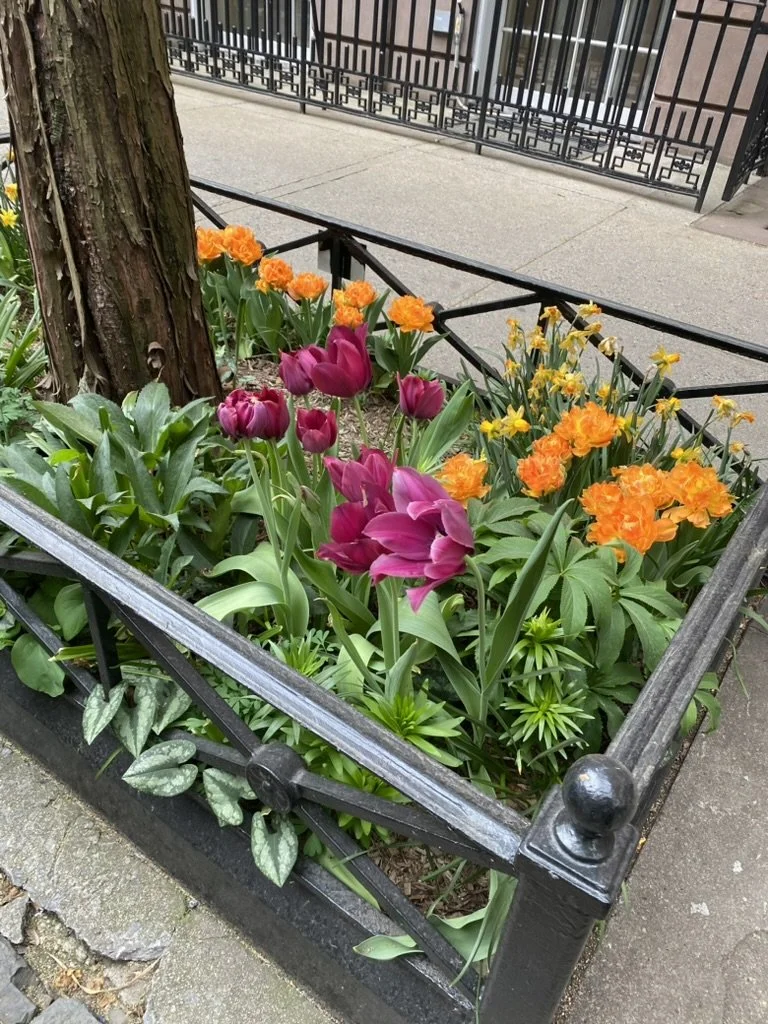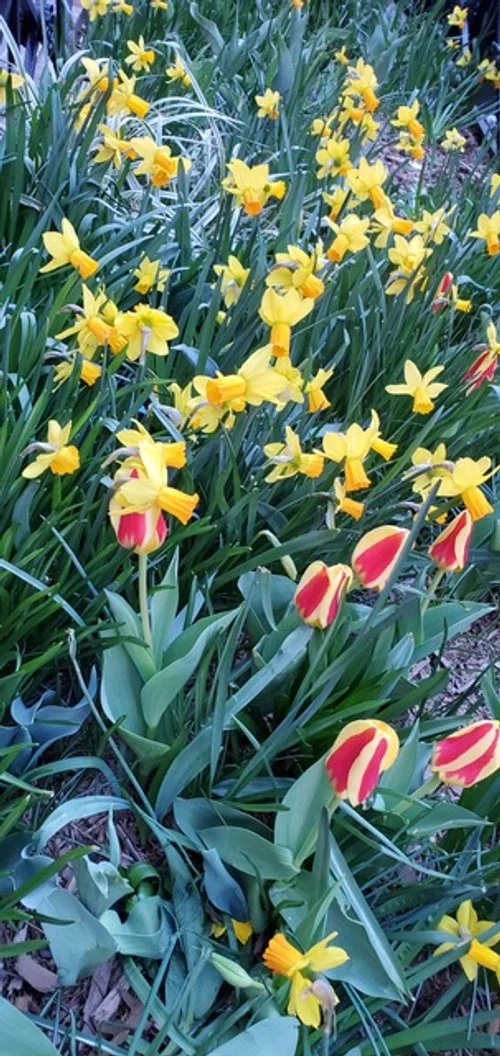In many ways, New York City never disappoints. Many of the City’s accomplishments are remarkable. The NYC Tree Map is one of those remarkable accomplishments. Imagine managing all the trees along our streets and landscaped parks. As required by one of the many NYC Local Laws, Parks maintains a regularly updated map on its website that displays each tree that was inspected, the result of inspection and action taken by Parks. Originally the Tree Map was a Street Tree Map. After a 2016-2018 Park Tree inventory, trees growing in landscaped parks were included. Central Park is not currently included as it is managed by the Central Park Conservancy and has its own databases. To take a look at the NYC Tree Map, go to NYCGovParks.org
Here are a couple peeks at the NYC Tree Map. If interested you can go to the site and check out the tree near your residence.
About the Trees the Block Association Takes Care Of:
Working with one of New York City’s most respected and professional tree services, Urban Arborists, our trees get attention 2-3 times a year or more, if needed, for pruning, soil amendments, damage repair or just a “check up” if a tree looks sickly.
The Block Association has taken on this job because the City/Parks Department is unable to cope with 800,000 trees citywide on a regular basis. They’re kept busy with tree risk or safety issues and storm events. There is a pruning schedule, but just a few trees in each neighborhood are scheduled each year and tree pruning for just a few trees in the neighborhood would be on the schedule for years before getting attention.
Your Block Association manages and maintains 27 trees of these 11 different varieties.
The Common Name is listed first and is followed by
The Scientific Name, i.e., the Genus & Species and is followed by
The number of that tree we maintain in our neighborhood.
Ginkgo — Ginkgo biloba (5) also known as the maidenhair tree, it is native to East Asia and is one of the oldest living tree species in the world. A survivor that dates back to before dinosaurs roamed the Earth, the Ginkgo was around 350 million years ago. Ginkgo trees work well as street trees because they are resistant to air pollution and tolerate compacted soil, acidic soil and salt. Male trees are typically used as street and landscaping trees. Female seeds may omit a foul odor. Gingko trees can grow 50 to 80 feet tall and 30-40 feet wide. When a frost arrives, all ginkgo leaves fall at once. Most people would agree that Ginkgo trees are an elegant tree.
Silver Linden — Tilia tomentosa (2) known as Silver Lime in the UK, is a species of flowering plant native to southeastern Europe and southwestern Asia, from Romania and the Balkans east to western Turkey. The Silver Linden grows from 50-70 feet tall and 30-50 feet wide. Leaves are large, coarse and heart-shaped with silvery undersides. Fragrant yellow flowers bloom in summer. Silver linden trees can live for over 1000 years.
Little Leaf Linden — Tilia cordata (2) prized for its shade and fragrant flowers. It grows to 50 feet, has a very attractive shape and is considered the best landscaping linden. The late spring sweet aroma from the clusters of pale yellow flowers is delightful. Local bees love it too. But lindens can also be a major food choice for pests like Japanese Beetles, aphids, scales, etc. According to myth the tree is associated with Freya, the Germanic Goddess of truth and love and it was believed that you could not tell a lie under the linden tree.
Callery Pear — Pyrus calleryana (3) is native to China and Vietnam grows 16 to 26 feet tall with a conical or rounded crown. Leaves are oval, long, glossy and dark green above and pale beneath. White five-petal flowers are produced abundantly in early spring giving off a not so pleasing odor although the smell attracts pollinators. Fruits are small and woody and usually taken by birds especially after softened by a frost.
Sophora — Styphnolobium japonica (4) or Japanese Pagoda tree is native to China and Korea, but not Japan. The tree was introduced to Japan where it is commonly found on the grounds of Buddhist temples. They typically grow 40 to 60 feet tall and 30-45 feet wide with a broad rounded crown. Sophora grows rapidly and tolerates polluted city conditions, heat and drought, but it can take a decade to bloom for the first time. The flowers and leaves are used in traditional Chinese medicine. The Sophora can live for around 177 years.
Dawn Redwood — Metasequoia glyptostroboides (1) is a fast-growing, endangered conifer and is the sole living species of the genus Metasequoia. It is deciduous rather than evergreen and is classified as “critically endangered” due to human encroachment. There are three distinct redwood species: dawn redwood; giant sequoia and coast redwood. The Dawn redwood is one of the most beautiful trees in North America — and fast growing. It can reach 70 feet tall or more. (In the right conditions and site, it can grow taller than 160 feet and 7 feet in diameter). Life expectancy is over 100 years.
Willow Oak — Quercus phellos (2) is a graceful tree with a straight slender trunk and soft willow-like leaves. It’s a medium to large-size and fast-growing deciduous tree that may grow 40-75 feet tall. Native to the southeastern United States, it is typically found in the woods bordering swamps or streams. It is tolerant of urban pollution and makes for a nice, upright shade tree with its oval to round crown. Willow Oaks are especially striking in the fall when the leaves turn a beautiful bronze color. At about age 20, as do all oaks, it will grow acorns.
London Plane — Platanus x acerifolia (3) This is a hybrid resulting from a cross between the native sycamore and the non-native Asian plane tree. It is a large tree growing 65-100 feet tall usually with pale grey-green smooth peeling bark (sometimes brown). The London Plane is tolerant of pollution and root compaction making it a popular urban tree. The London plane tree was cherished by Robert Moses, NYC Parks Commissioner from 1934 to 1960. It is thought that the Parks Department’s distinctive logo is based on the leaf of a London plane. It is on the NYC Parks Department’s list of restricted use species for street planting because it constitutes more than 10% of all NYC trees.
Plum — Prunus cerasifera (1) The purpleleaf plum tree also known as a cherry plum is a popular flowering specimen tree. It is a relatively short-lived tree, lasting only around 20 years. And, they may subject to infestation of insects or diseases. Usually only male trees are planted to avoid fruit and sees littering sidewalks and streets. Since short-lived, we better love our little purple tree while we have it to enjoy.
Pin Oak — Quercus palustris (3) is probably used more than any other native oak in landscaping due to ease of transplant, relatively fast growth and pollution tolerance. Similar to the Willow oak with its upright stance. The common name is due to the presence of spearlike slender branchlets that stand out like pins on the trunk and larger limbs. Leaves are glossy green in summer and change to russet, red or bronze in fall. Like the Willow Oak, the Pin Oak will produce acorns at about age 20 making birds and squirrels happy.
Honey Locust — Gleditsia triacanthos (1) common city trees, Honey Locusts are valued for their slender growth habit, lacy effect and light, filtered shade. The common name refers to the sweet, sticky pulp that surrounds the seeds. They are deciduous, grow to 70-80 feet and bear compound leaves often with numerous leaflets. Honey locust was one of the most popular trees used after the decline of the American elm. Green clustered flowers bloom in late spring, followed by long, sometimes twisted reddish brown legume seed pods. It is tolerant of wind, high summer heat, drought and shine condition, but subject to a large number of insects and diseases.





















